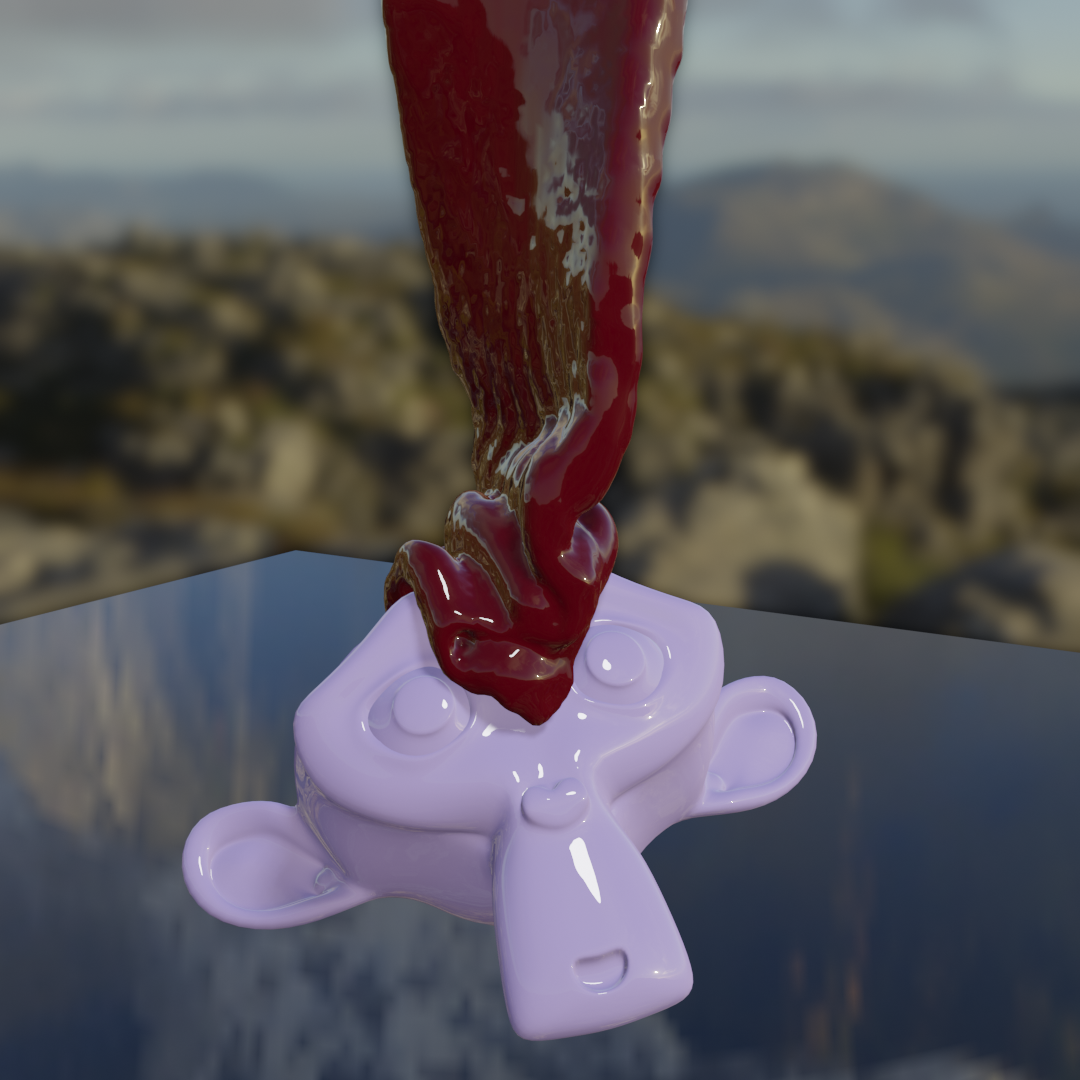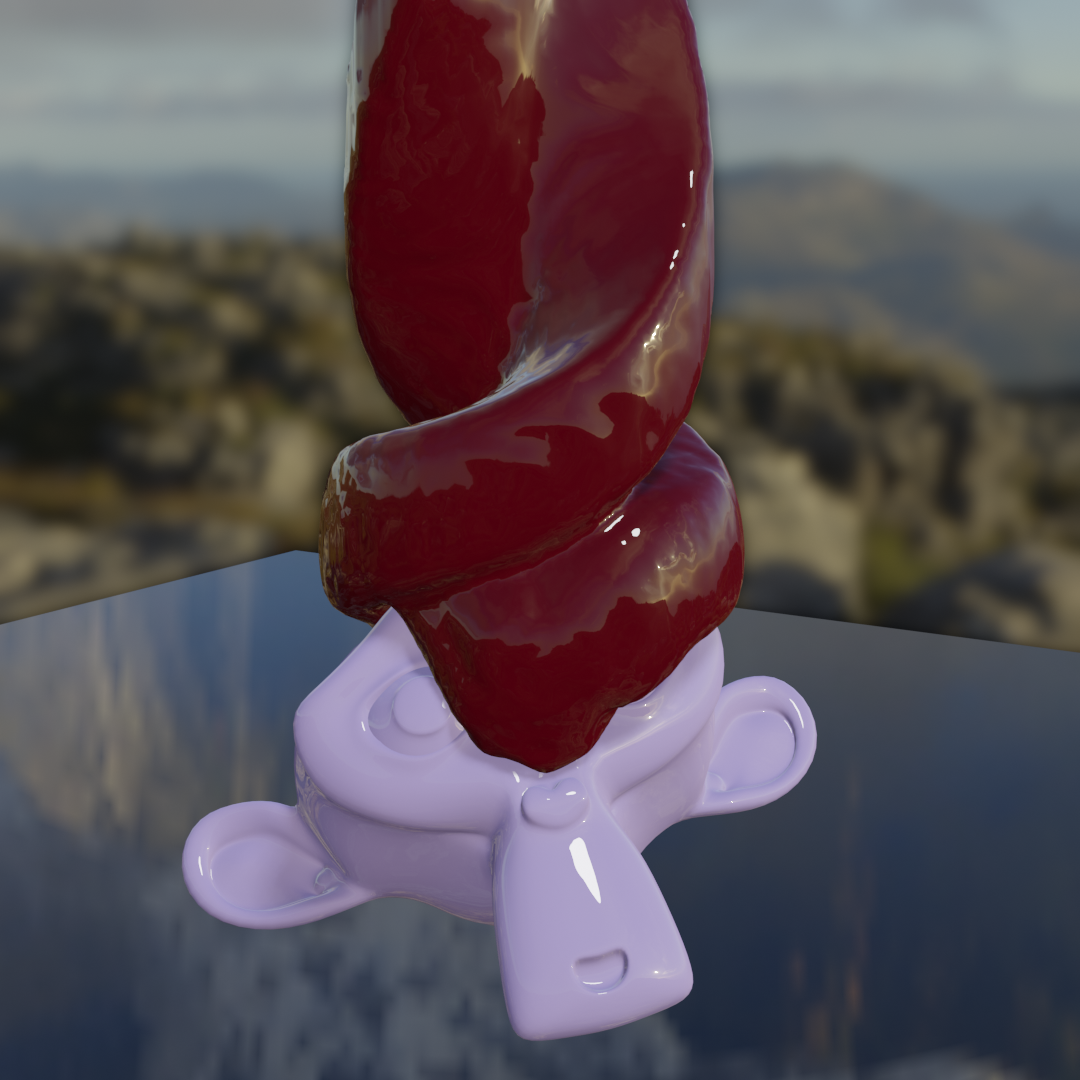Difusión¶
Referencia
- Tipo:
Dominio
- Panel:
Liquid diffusion defines the physical properties of a liquid and in turn define how a liquid interacts with its environment. The main factors of diffusion are the Viscosity and Surface Tension. These properties can be adjusted to create virtual liquids that behave like water, oil, honey, or any other liquid. A couple presets exist to change the diffusion for different substances are predefined and can be changed in the preset menu. Fluid Diffusion settings can be enabled/disabled in the panel header.
- Viscosidad
The viscosity refers to the «thickness» of the fluid and actually the force needed to move an object of a certain surface area through it at a certain speed.
For manual entry, please note that real-world viscosity (the so-called dynamic viscosity) is normally measured in Pascal-seconds (\(Pa\cdot s\)), or in Poise units (P, equal to 0.1 \(Pa\cdot s\)), and commonly centiPoise units (cP, equal to 0.001 \(Pa\cdot s\)).
Blender, on the other hand, uses the kinematic viscosity which is the dynamic viscosity divided by the density, \(\frac{Pa\cdot s}{kg/m^{3}}\), which is \(m^{2}/s\). So for example, the viscosity of water at room temperature is 1.002 cP, or 0.001002 \(Pa\cdot s\); the density of water is about 1000 \(kg/m^{3}\), which gives a kinematic viscosity of 0.000001002 \(m^{2}/s\) – so the entry would be 1.002 times 10 to the minus six (1.002×10-6 in scientific notation).
The table below gives some examples of fluids together with their dynamic and kinematic viscosities.
Blender viscosity unit conversion.¶ Fluidos
Dynamic viscosity (in cP)
Kinematic viscosity (Blender, in \(m^{2}/s\))
Agua (20 °C)
1.002×100 (1.002)
1.002×10-6 (0.000001002)
Aceite SAE 50
5.0×102 (500)
5.0×10-5 (0.00005)
Miel (20 °C)
1.0×104 (10,000)
2.0×10-3 (0.002)
Salsa de chocolate
3.0×104 (30,000)
3.0×10-3 (0.003)
Ketchup
1.0×105 (100,000)
1.0×10-1 (0.1)
Vidrio derretido
1.0×1015
1.0×100 (1.0)
Truco
You can find the kinematic viscosity of more materials in the proper units by asking Wolfram Alpha, e.g. «kinematic viscosity of alcohol in m^2/s».
To simplify the input of these numbers, the viscosity is changed by entering values in scientific notation by entering a base value and the exponent of that number.
- Base
The base of the viscosity value (e.g. 1.002 in the case of water (20 °C)).
- Exponente
The exponent of the viscosity value that will be multiplied by 10-1 (e.g. 6 in the case of water (20 °C)).
Nota
Variación de la viscosidad
The default values in Blender are considered typical for those types of fluids and «look right» when animated. However, actual viscosity of some fluids, especially sugar-laden fluids like chocolate syrup and honey, depend highly on temperature and concentration. Oil viscosity varies by SAE rating. Glass at room temperature is basically a solid, but glass at 1500 °C flows (nearly) like water.
Advertencia
The simulator is not suitable for non-fluids, such as materials that do not «flow». Simply setting the viscosity to very large values will not result in rigid body behavior, but might cause instabilities.
- Tensión superficial
Surface tension in grid units. Higher value will produce liquids with greater surface tension.
Método de alta viscosidad¶
The high viscosity liquid solver can be used to simulate fluids with increased viscosity, replicating the behavior of substances like honey or molasses. This specialized solver enhances the accuracy of slow-moving and thick liquid simulations.
- Intensidad
The viscosity of the liquid. Higher values result in more viscous fluids.
Nota
A strength value of 0 will still apply some viscosity. Uncheck the High Viscosity Solver to disable the high viscosity liquid solver simulation step completely.

